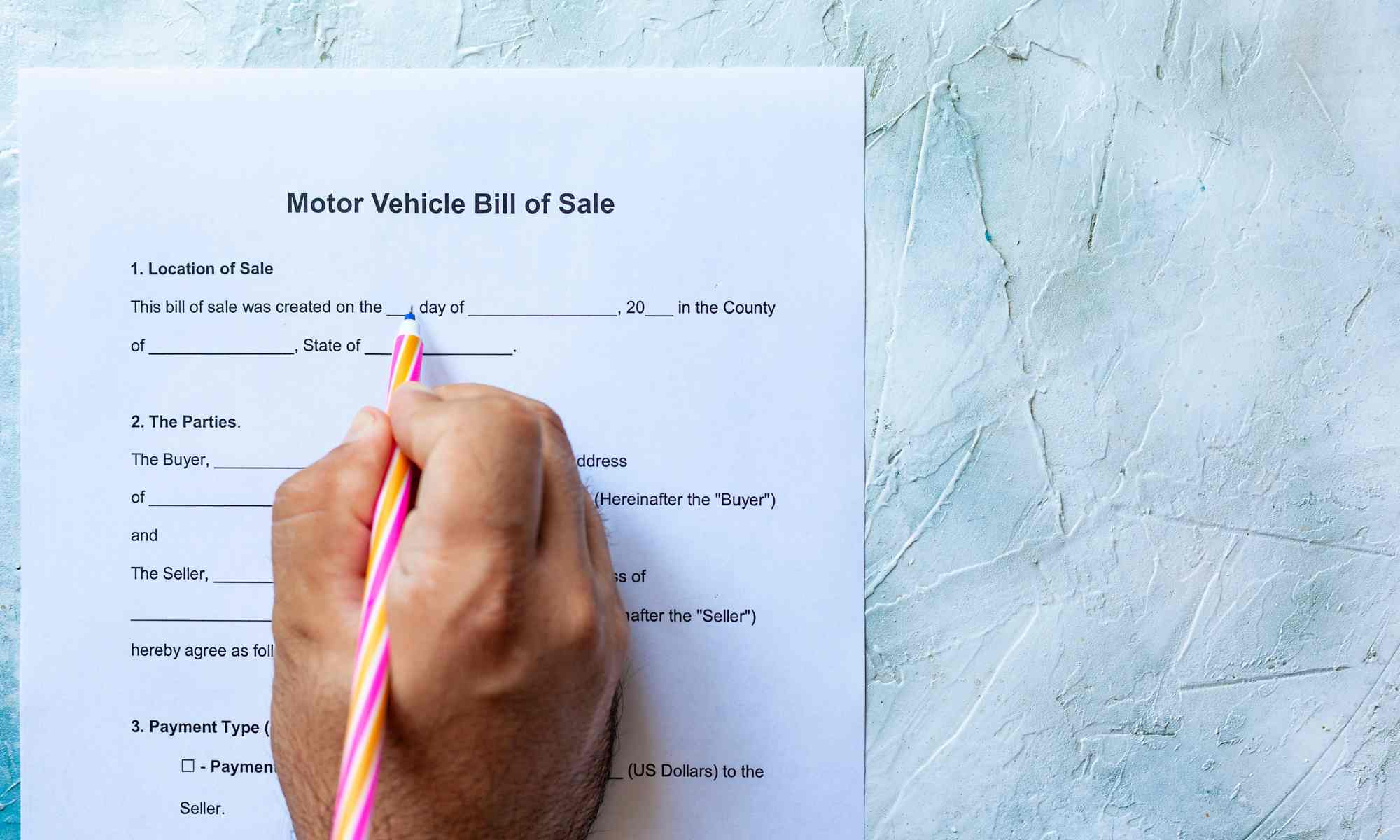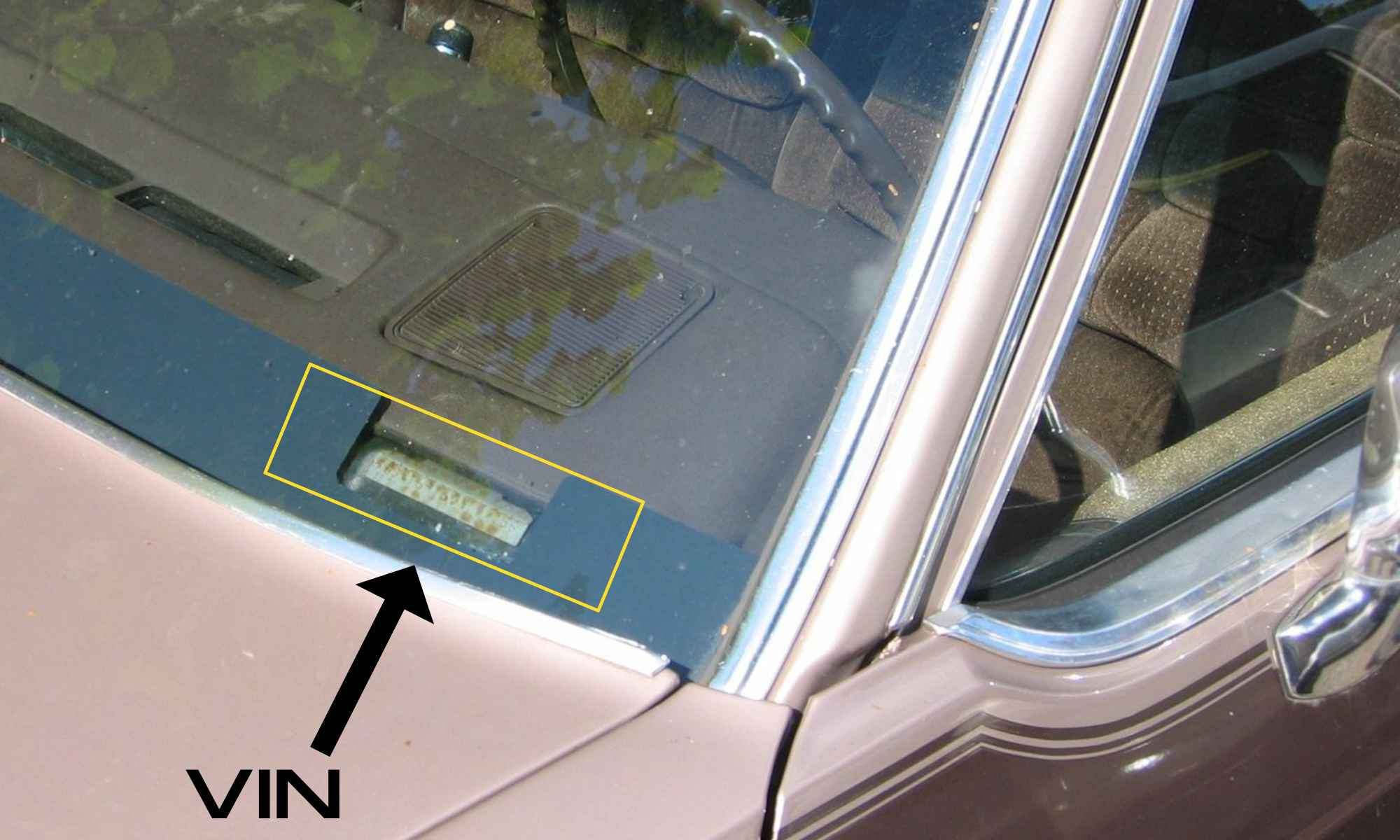If you’re considering buying a car without a title from a private seller, it’s imperative that you take proper precautions and follow all the necessary steps to not be out a lot of money or end up with a legal mess on your hands.
My friend recently walked me through the steps of the entire process. He recently bought his third car with only a bill of sale. While in the past it has always felt too risky to me to buy a vehicle without a title, I’ve now learned and experienced that there is a safe, legal process for doing this, if you don’t cut any corners. So we are laying out the steps we went through for how to get a bonded title for a car without a title.
If you’re interested in Follow the Build’s latest video about this, check it out here:
(Note: State’s requirements can vary, so make sure you verify your state’s requirements before purchasing a car without a title and beginning this process. )

Step 1- Get the VIN
This needs to be done before you purchase the car. Find the VIN number and run it through a VIN decoder to research the vehicle’s history and to make sure the car is what the seller is saying it is.
Step 2- Do a Search
After you’ve checked the VIN on your own, go a step further and contact the auto theft division of your county or local police department. We live in Texas and would contact the Auto Theft Task Force in our county. You should have something similar in whichever state you live in.

This department will be able to run a check of the VIN number and see if it’s a stolen car or if there are any other red flags. They may even be able to do this over the phone, so it’s definitely worth a call.
Step 3- Get a Bill of Sale

So, you’ve decided to go forward with the purchase. Make sure that the seller has a detailed Bill of Sale complete with this necessary information:
- Vehicle Identification Number
- Seller’s name and address
- Buyer’s name and address
- Price paid
- Signatures of buyer and seller and dates
- *Signature of witness or notarization is not required but recommended
Both the buyer and seller should have a physical copy of the bill of sale. This is the only documentation you have at this time, so it’s super important that there are no discrepancies.
Step 4- Schedule a VIN Inspection
This is not a typical vehicle inspection but a specific law enforcement VIN inspection to check for any titling issues. (If you live in Texas like us, it is called a 68-A Inspection.) Dependent upon where you live, you’ll either make an appointment at an inspection site or schedule a time for them to come to you.
To schedule, do an online search for the closest law enforcement inspection or VIN inspection near you, fill out the necessary forms and schedule your inspection. It’s the next step to getting a replacement title for your used vehicle.
Then, be prepared to wait. Here where we live in Tarrant County, Texas, it is typically about a 6-week wait for the inspection. It’s really difficult to not start driving or working on your vehicle during this waiting period, but please hold off. You don’t want to dump money or be caught driving a potentially stolen car.
Step 5- Take the Documentation to the Title Office
Now that you’ve passed your VIN inspection, it’s time to head to the title office. Before going, double-check that you have all the proper documentation by checking with your local DMV website. Most states require:
- the bill of sale with the vehicle’s VIN
- inspection paperwork
- bonded title application
- state-issued ID
If all of your documentation is approved, the title office will determine the amount of the bond. This will be 1.5 times the value of the vehicle. So for example, if the value is determined to be $10,000, the bond will be for $15,000.
How is the value determined?
The value is determined by the taxable value and not the amount the car was purchased for. Most states have their own database or will refer to the National Auto Dealers Association reference guide to determine the value. If the value can’t be determined, an appraiser will determine the value.

Step 6- Get a Bond
You’re almost there! Now that your documents are approved and you have the bond amount, it’s time to purchase the surety bond. This can be done at an insurance company or surety bond agent. Note that most states will give you a time limit on applying for this bond, so make sure you purchase your bond before the deadline. Otherwise, you’ll be starting the project all over again.
You can expect to pay 1-3% of the bond amount for your surety bond. So for a vehicle with a bond amount of $15,000, you can expect to pay between $150- $450, depending upon your credit.
Step 7- Apply for a Title

The final step of this process is applying for a title. You’ll need to bring all of your documentation from the previous steps and the required fee amount to the tax assessor office or department of motor vehicles, depending upon the state you live in. In Texas, we have 30 days in which to do this. Make sure you know your state’s deadlines and apply for your title as soon as possible.
You’ll receive your title in the mail in the following weeks. After that, you’ll complete your state’s requirements for vehicle inspection and registration and get your license plates. Then you’re ready to get your new car on the road.
What is a Bonded Title?
Also known as a lost title bond or title surety bond, a bonded title is a motor vehicle title that is issued in the case of a missing title.
It is backed by a surety bond issued to the vehicle’s new owner. This person is legally and financially responsible for all claims concerning the car after they purchase a bonded title. If there are any false statements or misrepresentations, the government or other parties can make a claim against this bond, resulting in legal trouble for the owner. It is a bad idea to give any false information when applying for a title bond, as there are serious repercussions.
One thing you should know about a bonded title is that they are open to disputes for a period of time, although this is rare. When you receive a bonded title, it can still be challenged. It is provisional, meaning it is temporary. Most states allow the title to be challenged for up to 3 years. If during this time period, there are disputes that require court litigation, you will be responsible for reimbursing the surety for any court fees. You’ll want to contact a goods and services attorney to help you with any disputes regarding your bonded title.
If after the provisional time, there are no problems or disputes, the car will be issued a clean, new title, and you’ll be the rightful owner!
What are Surety Bonds?
A surety bond is purchased through an agent, such as an auto insurance agency. When you purchase a surety bond, you are entering a contract and guaranteeing to be responsible and liable for the bond amount. A surety bond is a contract between 3 parties by which one party, the surety, guarantees the performance or obligations of a second party, the principal, to a third party, the obligee. A surety bond is a guarantee to be liable for any debt, default, or failure of the principal.
The DMV or another affected party can make a claim against the title bond if the principal misrepresents any aspect of their ownership of the vehicle. The principal is liable for reimbursing the surety for any claims paid by the surety for damages, such as legal fees.
Why You Should do Your Research Before Buying a Car Without a Title
It’s Totally Free
There are free VIN checkers and decoders online, so you don’t have to pay a penny for this.
It’s also free to call the police department and ask them to run the VINS to check for a potential problem with a vehicle history report.
You Don’t Know What You Don’t Know
You can’t always take the word of a previous owner about a car or simply go off how the car looks and runs. There are some shady shops out there that have done some shady work and know how to hide it. You’ll especially see this in the case of body swaps or conversions of older vehicles. With the swapping of parts comes the swapping of VINS and titles. You don’t want to get hoodwinked by someone trying to make some extra money at your expense, so you’ve got to research.
The last thing you want to do is buy a car without doing your research and then come to find out it was stolen when you do the law enforcement inspection or have the ownership disputed after obtaining a bonded title. Finding this out before you purchase the car will save you so much money and frustration on the road.
How to Research a Car’s History
I can’t stress enough how important it is for you to do your research when buying a used car, especially if the vehicle does not have a title. Here are some free ways to research a car’s history before purchasing.

VIN Decoder
When you’re looking at a used vehicle, locate the vehicle identification number (VIN) before you consider buying it. A VIN number is a code unique to each individual motor vehicle that is assigned to it at the time it was manufactured.
The VIN numbers of cars are located in different places, so you might have to do a Google search to determine where the VIN locations are for the specific model and year of the car you’re looking at. For example, a 1967 and 1968 Mustang have VIN numbers in different locations, so make sure you know where all of the VIN numbers are located.
After you’ve found the VIN numbers, run the numbers through a VIN check or decoder. If you’re looking at a classic car, you’ll have trouble on typical VIN decoding websites, since pre-1980s VINS are shorter and formatted differently. We like using VIN Magic and Classic Car Database for decoding our classic car VINS. If you are shopping for a 1980 or newer car, you can use a number of free VIN checkers, such as this one.
Validate the VINS match
If the car has a VIN in more than one location on the car, make sure that they match, With the swapping of metal can come the swapping of VINS, whether accidentally or on purpose. If the VINS don’t match, that’s your clue that something fishy could be going on.
Wrapping Up
We hope this guide has been helpful to you as you navigate buying a car without a title and obtaining a bonded title. Remember, that the steps and details vary from state to state, but this is a general guide to help you what is included in this process. We are not legal experts and are sharing our experience. Please make sure you verify your state’s process before spending any money on a car without a title.








